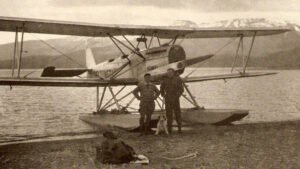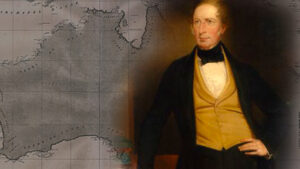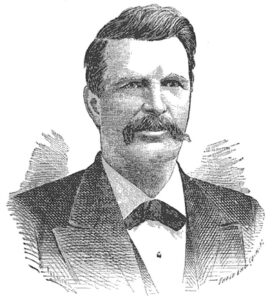In the 1900s, a woman traveling alone was unheard of. Travel was dangerous and tiring, and women were deemed unfit for such rigors. But Annette Meakin did not allow others to dictate her decisions. She took herself and her mother on one of the most remote journeys ever, on the new Trans-Siberian Railway. This innovative railway took passengers from Moscow to the remote Far East, at Japan’s doorstep.
Background
Annette’s father founded a newspaper in Tangiers, Morocco. Here, she lived intermittently for a few years, traveling back and forth to England. Eventually, she decided to return to England for good to pursue her education. Not much is known about her mother, but Annette’s siblings had careers of their own in journalism and psychology.
Annette Meakin grew up with an affinity for the arts. She was incredibly gifted at Latin and keen on other languages, as well as travel and anthropology. She also loved music and attended the Royal College of Music. Meakin then attended University College London and discovered a love for writing. All in all, she was a very accomplished woman for her time.

Annette Meakin in 1890. Photo: Unknown
The Trans-Siberian Railway
“It was during a visit to Russia in the summer of 1896 that my attention was drawn for the first time to the ‘Great Siberian Railway’,” she said.
This was four years before the railway had been completed. She decided that she would become the first English woman to travel its entire distance. English gentlewomen weren’t exactly lining up to attempt this journey. The Trans-Siberian is the longest railway in the world, stretching approximately 9,300km from Moscow to Vladivostok on the Sea of Japan. She decided not to go alone and invited her mother to accompany her.
According to historian Nile Green, most of the handful of women who took advantage of such new opportunities were politically motivated, especially around women’s suffrage. While Annette sympathized with the cause, she did not officially align herself with the movement. Most likely, she did not like to be labeled. She enjoyed doing her own thing and being independent.
She and her mother first traveled from London to Paris to study French and cartography. They stayed there for six weeks, prepping for the journey. From Paris, they moved on to Russia. Here, delays and disputes were normal, and their quarters were highly uncomfortable, now frigid, now sweltering.
She also learned of the brutality of Russian soldiers and prisons. On the bright side, she and her mother met individuals from around the world. They even met a single woman traveling through Russia alone. She made extensive observations of Siberia’s wetlands and lakes. They arrived at the Sea of Japan safely and returned to England via a North American route.

Trans-Siberian Railway in 1904. Photo: Unknown
‘A Ribbon of Iron’
This subject matter inspired her most notable work, A Ribbon of Iron. It highlighted the plight of Asian women and compared European and Asian women in their journeys from girlhood to motherhood during times of political upheaval. She witnessed the injustices that women faced around the world. She diminished the contemporary narrative that women were “revolting.” Rather, she believed the movement was simply a transition, a caterpillar changing into a butterfly.
Other works
Besides Russia and Japan, she also explored Spain extensively. She was especially sympathetic toward places striving for more autonomy and independence. In Galicia: the Switzerland of Spain, she explored how Spanish unification caused the Galician people immense neglect and loss of identity.
At the same time, she elevated Galicia as the birthplace of Spanish nobility. Here, we can see how thorough and thoughtful she is, and how adept at history and politics. She covered its history from Roman times to the modern period, making insightful observations about the region and its people.
Her insightful travelogs earned her a spot in the Royal Anthropological Society and Goethe Society of Weimar. After she passed away in 1959, her works and personal documents became a part of the Bodleian Library at Oxford University.
Legacy
Annette Meakin’s observations were a great contribution to the field of anthropology. Never before had the Far East been seen through a Western woman’s eyes. When it came to detailing women’s experiences, she captured them more effectively than a man could.






